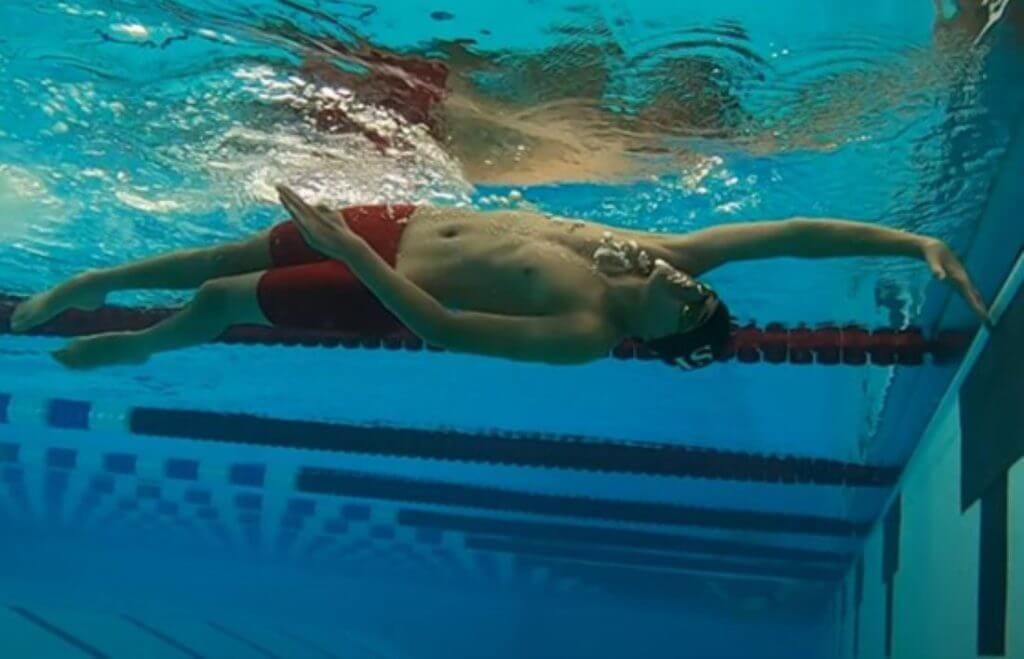Backstroke to Breaststroke: Which Turn is Right For You?

Backstroke to Breaststroke: Which Turn is Right For You?
The transition from backstroke to breaststroke in the individual medley has become a major topic of discussion in the swimming world over the past decade. The crossover turn has largely dominated the competitive scene, favored almost unanimously by professional and collegiate medley swimmers around the world. However, other options for this transition, such as the open turn, may be more effective for certain athletes.
Background
For the backstroke-to-breastroke turn in individual medley events, the official USA Swimming and NCAA rulebooks state: “The swimmer must touch the wall while on the back. Once a legal touch has been made, the swimmer may turn in any manner, but the shoulders must be at or past the vertical toward the breast when the swimmer leaves the wall, and the prescribed breaststroke form must be attained prior to the first arm stroke.”
These rules permit three common turn styles: the open, crossover, and somersault (or bucket) turn.
The open turn is the simplest, requiring the swimmer to touch the wall, pull their feet to their chest, and push off.
The crossover turn involves touching the wall, then rotating while bringing the forehead to the knees and pushing off sideways.
The somersault turn starts with a touch followed by a backward flip and push-off from the wall.
A Coach’s Perspective
While the crossover turn is widely considered the fastest transition, its effectiveness often depends on a swimmer’s individual strengths and technique. Glenn Mills, a 1980 Olympian, shared several factors that should be considered when comparing the efficiency of a crossover turn to an open turn.
Body Type – A swimmer’s body type can impact the speed and effectiveness of a crossover turn. Mills said that swimmers with shorter torsos and longer legs may end up too close to the wall unless they aim deep on the touch. Limited flexibility or mobility can also make the turn more difficult.
Breath Control – Another factor is breathing. Although crossover turns tend to be quicker, they don’t allow a swimmer to take a breath at the wall. Swimmers who rely on a strong breaststroke pullout may prioritize this over the potential speed advantage of a crossover turn. For these athletes, the open turn offers a larger benefit than the other turns. The extra breath can allow a swimmer to have a more powerful underwater, which may ultimately be more efficient.
Skill Level and Confidence – A swimmer’s skill level and wall timing also influence the choice of turn. Swimmers who are not yet comfortable with the crossover turn often perform it less efficiently than a more familiar option, such as the open turn. Mills shared that hesitating or misjudging the timing could cause a swimmer to glide too far into the wall, which could easily lead to a disqualification. He added that “it’s more important to build a strong foundation – like a powerful pushoff and an effective water pullout.”
While the crossover turn is generally faster, it’s only effective when executed well. For many swimmers, especially at the developmental level, a well-practiced open turn may be the more efficient choice.
How do you know which turn is right for you?
With so many factors affecting the effectiveness of each transition, it may be worth testing which turn works best for each swimmer. Technique coach Dan Jimar developed a simple test that swimmers and coaches can use to evaluate turn efficiency by breaking it into timed segments.
Turn Efficiency Test
- Start the swimmer near the middle of the pool.
- Use a stopwatch with a split function and record the following times:
- First split: when the swimmer’s head passes the backstroke flags.
- Second split: when the swimmer’s hand touches the wall.
- Third split: when the swimmer’s feet leave the wall.
- Fourth split: when the swimmer’s head passes the flags again.
- Fifth split: when the swimmer reaches the breakout point (usually 8 to 9 yards from the wall).
Repeat the test several times for each type of turn – open, crossover and somersault – and compare the results.
This test measures a swimmer’s speed into the wall, turn speed, push-off, and breakout. Coaches may adjust the final marker distance based on the swimmer’s typical breakout point.
Final Thoughts
While the crossover turn may be the preferred choice among most high-level swimmers, especially with adequate practice, there are exceptions. Testing each turn’s effectiveness can help swimmers and coaches determine the option that maximizes speed and consistency for each swimmer.




I used to coach at a club which enforced the crossover turn on all swimmers. Even the little kids who couldn’t swim the four stroke yet 😭🤦♂️